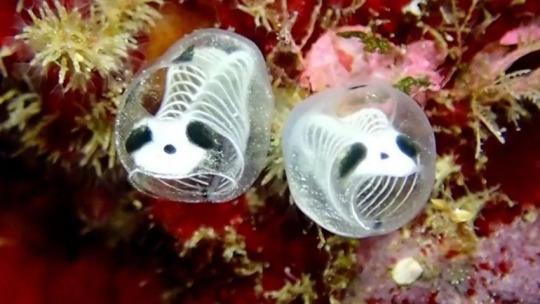(They/ them) Fun insect facts, insect art and random biology things I feel like reblogging
Don't wanna be here? Send us removal request.
Note
favorite bug?? ?
Once in high school I went to a Bruce Springsteen concert and it was a hot summer evening so the bugs were out in force and this one tenacious cicada flew right into Bruce’s face and bounced off onto the floor in front of him and he bent down to pick it up and held it out in front of the crowd and he said “all right, okay, I don’t want to cast aspersions on your local wildlife here, but North Carolina, can somebody please tell me—what the FUCK is this space-alien-lookin thing?” and a reporter took a picture and that was the image they used in the paper the next day: Bruce Springsteen looking perplexed while holding a concussed cicada
so yeah that’s my favorite bug, it was that specific cicada
7K notes
·
View notes
Text

some original art i made after disappearing from the face of the (tumblr) earth
40K notes
·
View notes
Text

buggy!! this is a sticker if you’re into that :)
2K notes
·
View notes
Text

Watercolor Cicada -
Painting something with a lot more detail and intricacy, wanted to paint a cicada for a long time, glad I did one eventually.
Just updated my Etsy shop! Check it out at: etsy.com/uk/shop/WolfieeeeWatercolor
1K notes
·
View notes
Text

There are four types of fish scales!
Cycloid scales are thin, overlap, and flexible. They're found on primitive teleosts (like minnows and carp).
Ctenoid scales have small, backwards pointed scales (known as cterns) make the fish more hydrodynamic and faster. They're found on Advanced Ctenoids (like perch and sunfish).
Ganoid scales are thick, diamond-shaped, and mostly non-overlapping. They're found on Chondrostei (like sturgeons and paddlefish).
Placoid scales are spikey and tooth-like with nerves. These are found on Chondrichthyes (like sharks and rays).
Ichthyology Notes 3/?
20K notes
·
View notes
Text
Round 2 - Arthropoda - Pycnogonida




(Sources - 1, 2, 3, 4)
Pycnogonida is a class containing one order: Pantopoda, which means “all feet.” A fitting name for creatures that seem to be made entirely of legs. Commonly called “Sea Spiders”, they are not spiders, nor are they arachnids, but are actually a sister group to all other living arthropods.
Pycnogonids live in most oceans. Most are tiny, living in relatively shallow water, though some can grow to be quite large in antarctic and deep waters. Some pycnogonids are so small that each of their muscles consists of a single cell. They have a proboscis which they use to suck nutrients from soft bodied invertebrates such as cnidarians, sponges, polychaetes, and bryozoans. They can also insert their proboscis into anemones, though this rarely kills the anemone. The pycnogonid digestive tract extends into their legs. They are segmented, with the first body segment (the cephalon) consisting of the proboscis, the ocular tubercle with up to 4 simple eyes, a pair of chelifores, a pair of palps, a pair of ovigers, and the first pair of walking legs. Ovigers are used for cleaning themselves, courtship, and caring for eggs and young. Nymphonidae is the only family where both the chelifores and palps (sensory organs) remain functional. In others, these limbs are reduced or absent, instead relying on a well-developed and flexible proboscis equipped with sensory bristles. Pycnogonids are usually comprised of eight walking legs, but the family Pycnogonidae includes species with ten, and the families Colossendeidae and Nymphonidae include species with up to twelve legs! While most species have up to 4 eyes, some deep-sea species lack them entirely. Pycnogonids do not have a traditional respiratory system, instead absorbing oxygen through their legs and diffusing it throughout their body via hemolymph. Their small, long, thin hearts beat vigorously at 90 to 180 beats per minute, creating substantial blood pressure. Their nervous system consists of a brain which is connected to two ventral nerve cords, which in turn connect to specific nerves. Like other arthropods, they molt their exoskeleton as they grow.
Pycnogonid reproduction involves external fertilization after a brief courtship involving the male stroking the larger female with his ovigers and receiving the eggs if she is responsive. The couple must adjust their position until the genital pores on their legs are perfectly aligned. Only males will care for eggs and young, and in some species only the males will have ovigers while the females do not, as these limbs are used mainly for carrying and cleaning the eggs. Larvae consist only of a head with chelifores, palps and ovigers. Extra segments and legs emerge as it grows into an adult. There are at least four different types of larvae. The typical protonymphon larva is most common, is free living and gradually turns into an adult. The encysted larva spends its larval days as a parasite, finding a host in a colony of polyps, burrowing into one, turning into a cyst, and not leaving the host until it has become a juvenile. The atypical protonymphon larva lives on or within a temporary host such as a clam or polychaete worm, does not encyst or otherwise harm their host, and leaves them as an adult. Lastly, the attaching larva hatches as an embryo and immediately clings to the legs of its father, only leaving once it has two or three pairs of its own walking legs.
The pycnogonid’s cerebral appendages are unique, not found anywhere else among arthropods, except in fossils like Anomalocaris. This could mean that pycnogonids are the last surviving (highly modified) members of an ancient stem group of arthropods that lived in Cambrian oceans.

Propaganda under the cut:
They are good dads. All of them. Perfect fathers made of legs.
Their leg arrangement allows them to move forward, backward, and sideways without turning their body.
The genus Colossendeis (image 2) includes the largest pycnogonids, which live in the ocean depths. Some of them are even bioluminescent! The largest is Colossendeis colossea which can reach a leg span of 70 cm (28 in). However, their body length, including proboscis and abdomen, only reaches 7 cm (2.8 in).
About 20% of the known species of pycnogonids live in Antarctica. The cold never bothered them anyway.
One known species, Ascorhynchus corderoi, is hermaphroditic, having both ovaries and testes.
178 notes
·
View notes
Text

Privet Hawk Moth - Mothtober #30
This hawk-moth is huge, with 12 cms. It's original area is Europe but it has been accidentaly introduced in Australia, Canada, New-Zeland and USA where it became an invasive specie. It can be see between May and August. If you disturb it, it can hiss.
About the drawing
This one was both simple and complicated to do. I had lots of trouble for the abdomen part but I was fun to render the smooth gradients of the wings.
40 notes
·
View notes
Text
Can’t believe I almost missed sea slug day! Here’s a Spanish shawl I drew a few years ago:

8 notes
·
View notes
Text

invertober day 5, greater bee fly. everybody shut the fuck up its diptera time
893 notes
·
View notes
Text

Pellucid Hawk Moth aka Coffee Bean Moth (Cephonodes hylas), family Sphingidae, Japan
Diurnal moth.
photograph by Yama Shigi
1K notes
·
View notes
Text
Skeleton Panda Sea Tunicate Appreciation Post!!! 💀 🐼 🌊







Clavelina ossipandae, the skeleton panda sea tunicate is a species of colonial ascidian, also known as sea tunicates, a group of sessile, marine filter-feeding invertebrates. Just some funky little guys!
First discovered near Kume Island in Japan by local divers, pictures of the animal attracted media attention in 2017. But they weren't given their formal taxonomic description until 2024
Love to sea it 🌊
8K notes
·
View notes









